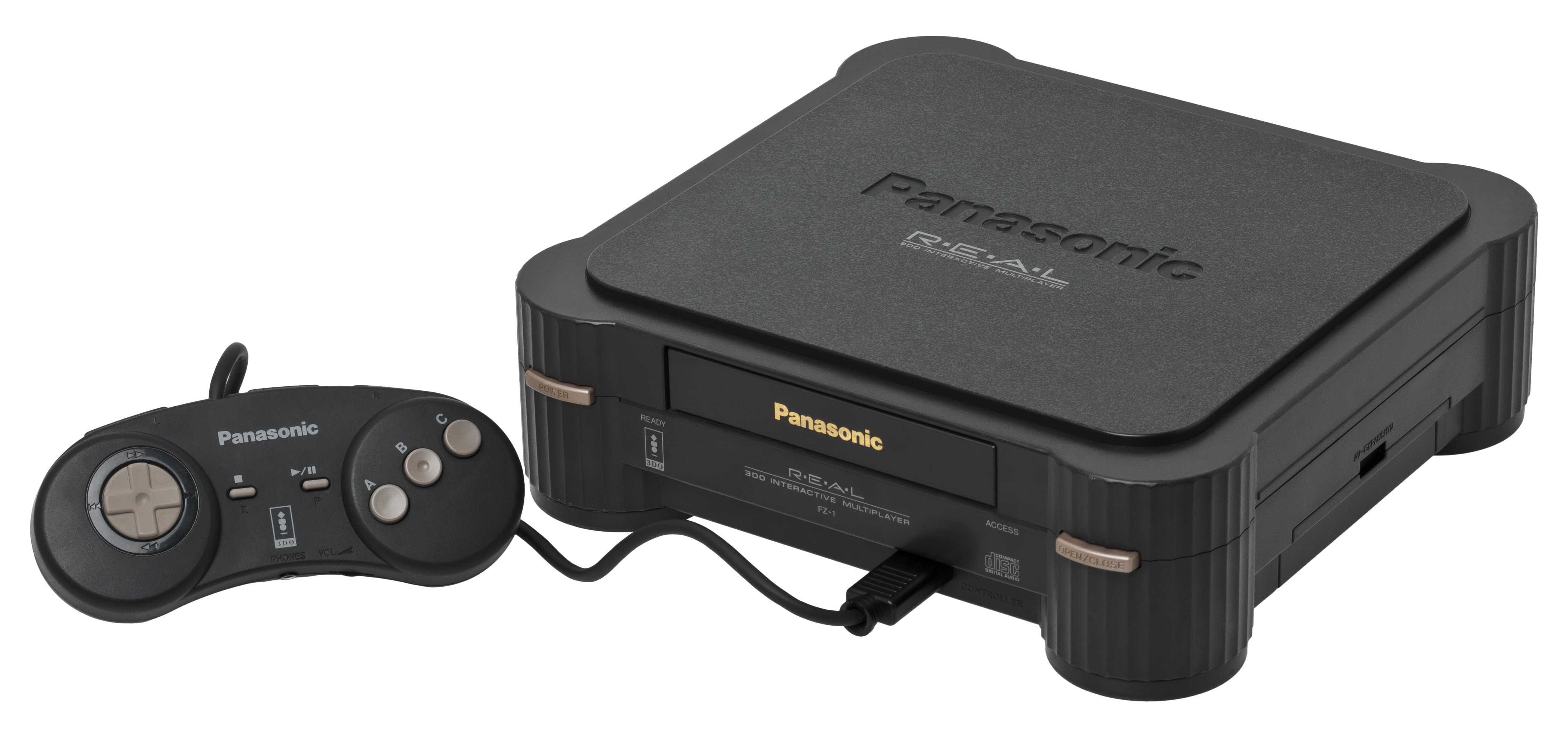|
Doctor Hauzer
is a 1994 survival horror-adventure video game developed by Riverhillsoft and published in Japan by Panasonic for the 3DO Interactive Multiplayer. The player takes on the role of Adams Adler, a newspaper reporter investigating a mansion for clues to the whereabouts of the eponymous Hauzer, a famed archeologist who has mysteriously disappeared. The game tasks the player with navigating the large mansion by collecting useful items, solving various puzzles, and avoiding deadly traps. ''Doctor Hauzer'' has stark graphical and gameplay similarities with early titles in the Infogrames survival horror series '' Alone in the Dark'', which feature 3D polygonal characters and objects set against fixed, pre-rendered backgrounds. However, ''Doctor Hauzer'' is the first of this genre to include fully 3D environments that the player can explore while freely swapping between third-person, first-person, and top-down perspectives. These characteristics were carried over into Riverhillsoft's nex ... [...More Info...] [...Related Items...] OR: [Wikipedia] [Google] [Baidu] |
Riverhillsoft
was a Japanese video game manufacturer in operation from 1982 to 2004. The studio focused in the 1980s developing games for Japanese home computers, in the 1990s shifted to console game development, and in the 2000s to mobile games. They also published Western games in the Japanese market. History The company was initially known for the successful '' J.B. Harold Murder Club'' series of murder mystery adventure games, developed from 1986 onwards. They were initially released as computer games and later ported to the PC Engine CD console, Nintendo Family Computer, Nintendo DS handheld, and iOS mobile. Riverhillsoft also published ''Prince of Persia'' in Japan. Their ports to the Japanese NEC PC-9801 and PC Engine CD platforms featured improved graphics (introducing the Prince's classic "turban and vest" appearance) and a new Red Book audio soundtrack. They also ported it to other computers and video game consoles, helping the game become a worldwide success. Riverhillsoft w ... [...More Info...] [...Related Items...] OR: [Wikipedia] [Google] [Baidu] |
Bloomsbury Publishing
Bloomsbury Publishing plc is a British worldwide publishing house of fiction and non-fiction. It is a constituent of the FTSE SmallCap Index. Bloomsbury's head office is located in Bloomsbury, an area of the London Borough of Camden. It has a US publishing office located in New York City, an India publishing office in New Delhi, an Australia sales office in Sydney CBD and other publishing offices in the UK including in Oxford. The company's growth over the past two decades is primarily attributable to the '' Harry Potter'' series by J. K. Rowling and, from 2008, to the development of its academic and professional publishing division. The Bloomsbury Academic & Professional division won the Bookseller Industry Award for Academic, Educational & Professional Publisher of the Year in both 2013 and 2014. Divisions Bloomsbury Publishing group has two separate publishing divisions—the Consumer division and the Non-Consumer division—supported by group functions, namely Sales an ... [...More Info...] [...Related Items...] OR: [Wikipedia] [Google] [Baidu] |
Edge (magazine)
''Edge'' is a multi-format video game magazine published by Future plc. It is a UK-based magazine and publishes 13 issues annually. The magazine was launched by Steve Jarratt. It has also released foreign editions in Australia, Brazil, France, Germany, Italy, and Spain. History The magazine was launched in October 1993 by Steve Jarratt, a long-time video games journalist who has launched several other magazines for Future. The artwork for the cover of the magazine's 100th issue was specially provided by Shigeru Miyamoto. The 200th issue was released in March 2009 with 200 different covers, each commemorating a single game; 199 variants were in general circulation, and one was exclusive to subscribers. Only 200 magazines were printed with each cover, sufficient to more than satisfy ''Edge''s circulation of 28,898. In October 2003, the then-editor of ''Edge'', João Diniz-Sanches, left the magazine along with deputy editor David McCarthy and other staff writers. After the w ... [...More Info...] [...Related Items...] OR: [Wikipedia] [Google] [Baidu] |
Future Plc
Future plc is an international multimedia company established in the United Kingdom in 1985. The company has over 220 brands that span magazines, newsletters, websites, and events in fields such as video games, technology, films, music, photography, home, and knowledge. Zillah Byng-Thorne has been CEO since 2014. The company is listed on the London Stock Exchange and is a constituent of the FTSE 250 Index. History 1985–2012 The company was founded as Future Publishing in Somerton, Somerset, England, in 1985 by Chris Anderson (entrepreneur), Chris Anderson with the sole magazine ''Amstrad Action''. An early innovation was the inclusion of free software on magazine covers; they were the first company to do so. It acquired GP Publications so establishing Future US in 1994. From 1995 to 1997, the company published ''Arcane'', a magazine which largely focused on tabletop games. Anderson sold Future to Pearson plc for £52.7m in 1994, but bought it back in 1998, with Future chi ... [...More Info...] [...Related Items...] OR: [Wikipedia] [Google] [Baidu] |
Saved Game
A saved game (also called a game save, savegame, savefile, save point, or simply save) is a piece of digitally stored information about the progress of a player in a video game. From the earliest games in the 1970s onward, game platform hardware and memory improved, which led to bigger and more complex computer games, which, in turn, tended to take more and more time to play them from start to finish. This naturally led to the need to store in some way the progress, and how to handle the case where the player received a " game over". More modern games with a heavier emphasis on storytelling are designed to allow the player many choices that impact the story in a profound way later on, and some game designers do not want to allow more than one save game so that the experience will always be "fresh". Game designers allow players to prevent the loss of progress in the game (as might happen after a game over). Games designed this way encourage players to 'try things out', and on ... [...More Info...] [...Related Items...] OR: [Wikipedia] [Google] [Baidu] |
Player Character
A player character (also known as a playable character or PC) is a fictional character in a video game or tabletop role-playing game whose actions are controlled by a player rather than the rules of the game. The characters that are not controlled by a player are called non-player characters (NPCs). The actions of non-player characters are typically handled by the game itself in video games, or according to rules followed by a gamemaster refereeing tabletop role-playing games. The player character functions as a fictional, alternate body for the player controlling the character. Video games typically have one player character for each person playing the game. Some games, such as multiplayer online battle arena, hero shooter, and fighting games, offer a group of player characters for the player to choose from, allowing the player to control one of them at a time. Where more than one player character is available, the characters may have distinctive abilities and differing st ... [...More Info...] [...Related Items...] OR: [Wikipedia] [Google] [Baidu] |
D-pad
A D-pad (short for directional pad or digital pad; officially referred to by Nintendo as a +Control Pad) is a flat, usually thumb-operated, often digital, four-way directional control with one button on each point, found on nearly all modern video game console gamepads, game controllers, on the remote control units of some television and DVD players, and smart phones. Like early video game joysticks, the vast majority of D-pads are digital; in other words, only the directions provided on the D-pad buttons can be used, with no intermediate values. However, combinations of two directions (up and left, for example) do provide diagonals and many modern D-pads can be used to provide eight-directional input if appropriate. Although D-pads offer less flexibility than analog sticks, they can easily be manipulated (requiring little movement of the thumb) with very high accuracy. They are also far less demanding in maintenance and do not protrude very far from the controller, mak ... [...More Info...] [...Related Items...] OR: [Wikipedia] [Google] [Baidu] |
Tank Controls
Tank controls are a control system used in video games whereby players control movement relative to the position of the player character, rather than the perspective of the game camera. Mechanism In a game with tank controls, pressing up (for example on a D-pad, analog stick, or cursor movement keys) on the game controller moves the character in the direction they face, down reverses them, and left and right rotates them. This differs from many 3D games, in which characters move in the direction players push from the perspective of the camera. The term "tank controls" comes from the steering mechanisms of old tanks, which had to stop completely before turning. Tank controls were common in 3D games in the 1990s, such as ''Grim Fandango'' and the early ''Resident Evil'' and ''Tomb Raider'' games. Tank controls allow players to maintain a direction when the camera angle changes. ''Grim Fandango'' designer Tim Schafer chose the system as it allowed the developers to create "cine ... [...More Info...] [...Related Items...] OR: [Wikipedia] [Google] [Baidu] |
Loading Screen
A loading screen is a screen shown by a computer program, very often a video game, while the program is loading (moving program data from the Disk storage, disk to Random-access memory, RAM) or initializing. In early video games, the loading screen was also a chance for graphic artists to be creative without the technical limitations often required for the in-game graphics. Drawing utilities were also limited during this period. ''Melbourne Draw'', one of the few 8-bit screen utilities with a zoom function, was one program of choice for artists. While loading screens remain commonplace in video games, background loading is now used in many games, especially open world titles, to eliminate loading screens while traversing normally through the game, making them appear only when "teleporting" farther than the load distance (e.g. using Warp (gaming), warps or fast travel) or moving faster than the game can load. Loading times Loading screens that disguise the length of time that a ... [...More Info...] [...Related Items...] OR: [Wikipedia] [Google] [Baidu] |





